Transmission Repair Specialists in West Jordan, Utah
Is your vehicle experiencing transmission troubles? We're transmission repair geniuses! We guarantee we can fix your transmission and get you up and running in no time.
READ MORE -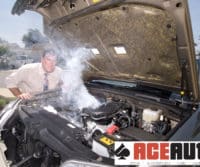

There's nothing worse than driving down the road and having your car overheat. Seeing steam coming from under the hood while red warning lights start to flash on your dashboard can get any driver's blood pumping. That's why it's a good idea to know why your car can overheat and what to do when and if it does.
There are many reasons your car may overheat. When your car overheats, it means that something is making it difficult for your vehicle's cooling system to do its job. Here are three of the most common overheating engine causes:
Regardless of your engine overheating reasons, once it does, you need to take a few steps to ensure your safety and to keep your car from suffering additional damage.

From overheated engines to engine rebuilds and even AC recharging, here at Ace Auto Repair Utah, we can handle any vehicle repairs you may need. Our team of trained professionals makes it their mission to get you and your vehicle back on the road as soon as possible. So, if you are in the Salt Lake City area, know that we can service any make or model car or truck, and we're here to help. Give Ace Auto Repair in West Jordan a call today at: (801) 803-6016 if you need your car or truck towed, or contact us to schedule an appointment.


Ace Auto Repair is excited to announce that we have officially moved to a new and improved automotive shop, conveniently located in West Jordan. Our new facility has more space in the shop for using the latest state-of-the-art equipment in auto repair. We also have more parking for the customers and perhaps best of all, you no longer have to travel down a bumpy dirt road to get to us.
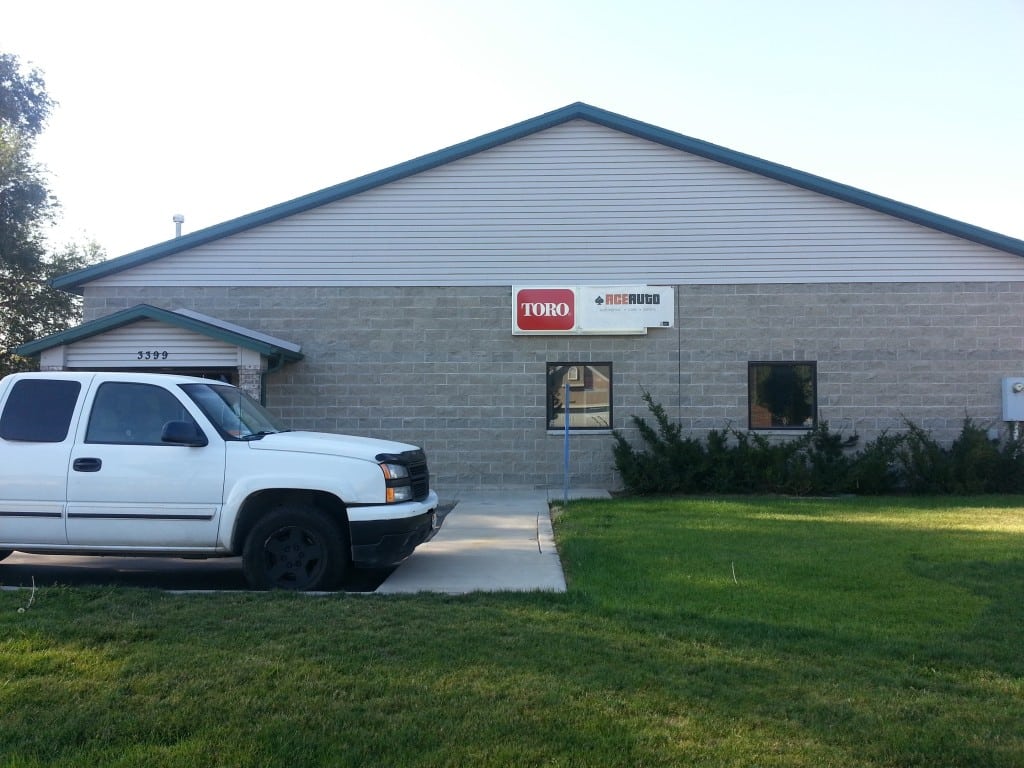
Ace Auto's New Address is:
Ace Auto Repair
3399 West 8395 South
West Jordan, UT 84088
Although our address has changed, our commitment to quality auto repair services at honest, affordable rates has not. If you are in the area, we would love for you to stop by for a visit.
Here at Ace Auto, we pride ourselves on honest and reliable engine repair. We do not tell a customer to fix something that does not need to be fixed, we always keep them informed through the entire process, and will not perform any work without consent.
To experience the Ace Auto Repair difference for yourself, give us a call at 801-803-6016 today!


With summer on its way, it's time to start thinking about readying your car for the heat and all its glorious travel opportunities. With a little preparation, you can be ready for a spur of the moment weekend getaway, and have the confidence that your car will get you there and back safely.
Winter weather can be hard on tires. This is a good time of the year to do a quick check on your tires. This should include inspecting the tread and verifying proper inflation. Poorly inflated tires impact grip which makes driving feel more erratic, can reduce your overall miles per gallon, and can even lead to a tire blowout. Always check tire pressure with a calibrated tire pressure gauge.
If you live in an area that permits snow tires, now is a good time to change them out for your standard warm weather tires. Also, check up on your spare. Make sure one is present, the correct spare for your ride, and that you have the tools to put it in should a tire blow. Nothing is quite as awful as discovering a missing jack at 3 am with a blown tire in the middle of nowhere.
Oil is another area that sometimes gets overlooked. Check the oil and adjust to suit the needs of your car. Your owner's manual for your car will list recommendations for your climate. Warm oil is thin oil, and oil that is not thick enough won't provide the lubrication necessary to keep your engine in good working order. If a dealership or garage does your oil change, ask after the viscosity of oil they are using to double check it’s the right version for your needs.
Overheating is a primary cause for summertime breakdowns. One great method to reduce the risk of this is to keep on top of your coolant maintenance. Your radiator should be flushed completely and refilled every other year and you should check the level, general condition, and concentration of the coolant once in a while between replacements. If you do the flushing yourself, dispose of the old coolant properly; it has a sweet taste that dogs love and it is highly toxic.
You want to keep an eye on your transmission fluid levels as well. Too much or too little, and you will run into problems that can, over time, lead to costly repairs. Further, make sure you read your manual to determine the correct mix of transmission fluid for your car. The SAE number found there will determine the right ATF mix.
Signs of too much transmission fluid:
Signs of too little transmission fluid:
On a swelteringly hot day, you want your A/C in good working order. If it's not blowing a nice frigid blast through your car, you likely are in need of additional refrigerant. Ace Auto Repair can help charge your A/C if it's not keeping you nice and cool.
As they say, an ounce of prevention is worth a pound of cure. Don't get stranded this summer on the side of the road with a smoking car. Bring your car into Ace Auto Repair in West Jordan, Utah for a summertime inspection, and we will check every element of auto maintenance listed above. Avoid summertime sadness and give your ride the basic service it requires to keep you on the road.
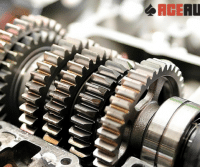

A slipping transmission is a sign that your vehicle needs maintenance or repair. It is not always a sign that the transmission is failing, but a slipping transmission should never be ignored. We’ve compiled some basic signs and symptoms of a transmission slip, as well as what to do if your transmission is slipping.
To figure out if your transmission is slipping, it helps to understand the purpose of a car’s transmission and a little bit about how it works. The transmission transfers the energy produced by the car’s engine to the wheels. The internal combustion engine of your vehicle creates power and the transmission converts that power into torque, or rotational energy. The torque is then conveyed to the axles and rotates the wheels.
When a transmission slips, it is not properly transferring the energy from the engine to the wheels. It may feel like the vehicle is slow to respond, or does not respond at all when you press the gas pedal. Or it could feel like your car changes gears suddenly without any apparent reason.
It is not always easy to diagnose a slipping transmission. There are a few common signs that you should definitely not ignore. Some of the more commons signs of a slipping transmission include:
A transmission can slip for several different reasons and some of the causes are far easier to fix that others. For example, a clogged transmission filter, low transmission fluid, or even burnt transmission fluid can all cause a transmission to slip and are not that difficult to fix. You’re looking at a more severe problem however if the transmission slips as a result of worn or broken transmission gears or bands.
Since low or ineffective transmission fluid is a likely cause of a slipping transmission, it can make a world of difference to do a transmission flush. This is when an ASE-certified technician flushes the transmission with fresh transmission fluid and cleans the entire system. Any burnt or ineffective fluid is flushed out. A transmission flush can also get rid of any contaminants that may have been preventing the proper flow of transmission fluid.
There are transmission fluid additives available that can help, to an extent, with some transmission slipping. These additives can help to improve friction or remove varnish buildup in the transmission. They cannot repair damaged gears or other internal parts of your transmission. Additionally, you should not use any transmission additive that contains solvents. Solvents can cause the seals in your transmission to wear more quickly by lowering your transmission fluid’s lubrication.
If you have had a transmission flush and tried an additive to no avail, you may have a serious transmission problem. The clutch may need to be adjusted or replaced. The bands may need adjustment or replacement. The gears themselves may even need to be replaced. In any of the instances, the transmission must be dismantled to perform these repairs.
If you think your transmission is slipping, it is better to deal with it now than to wait until later. A transmission slip that can be resolved with a transmission flush today may require more costly repairs in the very near future. If you are around West Jordan, UT and have any signs of a slipping transmission, contact Ace Auto Repair today. We’ll help get you and your vehicle back in gear.

![]()

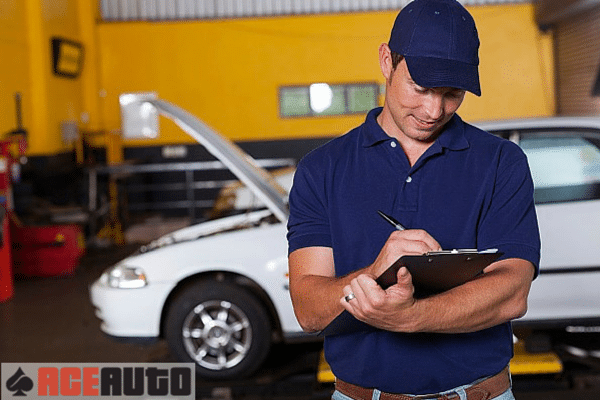
"Hey, does anyone know of a good mechanic?" We frequently hear this from our acquaintances or see this post on social media. Car repairs can be expensive, and, as consumers, we want to make the best choices possible when it comes to automotive services. Word of mouth is one way to find a good mechanic, but perhaps we should ask the larger question, "how do we avoid being ripped off by a dishonest mechanic?"
Start by looking to your owner’s manual for regular maintenance recommendations. Dishonest mechanics know that the easiest people to rip off are the ones who know nothing about their cars or what is being done to it. When you lack knowledge on a subject matter, you're more likely to believe whatever you're told, and therefore, stand a higher chance of being ripped off.
A great mechanic wants his customers to be well educated about their vehicle and the services he provides. Ask him to describe the vehicle’s problem in detail, including what should be done to fix it, what parts will need to be replaced, and how the problem affects the vehicle’s overall performance. If you do not understand something, make sure to ask follow up questions to clear up any inconsistencies or misunderstandings. A great mechanic will be eager to explain repairs to you and answer your questions; after all, it’s an opportunity to show off his expertise!
If a mechanic tells you that you need to replace a part, ask to see the part that needs to be replaced. Some "mechanics" will tell you that you need a part replaced, and then bring you the part, but it is not actually the one from your car. If have any suspicions, you can even ask to go back in the garage so you that you can examine the vehicle yourself. When a mechanic knows that you want the broken stuff back, the mechanic is more likely to actually do the work even he originally had plans for dishonesty.
Along with traditional word of mouth recommendations, online reviews are an excellent way to gather information about your mechanic. Start with a general Google search to read online reviews of the mechanic’s shop. Searching the mechanic by shop name along with the city and state will yield some important information including internet posts by satisfied and unsatisfied customers. Read all posts carefully. A single unhappy customer does not necessarily mean the mechanic is dishonest, but a pattern of unhappy customers means you should steer clear of this particular shop. Google+, Yelp, and the Better Business Bureau’s online search tool are excellent ways to gather information about your potential mechanic.
A detailed written estimate is critical to have in hand prior to authorizing the performance of any service work. Have the repair shop give you an estimate of exactly what they will be doing, what they are replacing, the tests they will be doing (if any), the parts they plan to replace and the amount of time they think it will take. A written estimate amounts to a basic contract in most states and protects the consumer from unauthorized work and expenses. With an agreed upon written estimate, the mechanic cannot perform any repairs that are not on the estimate without your approval. Just as you would never sign a blank check and hand it over to your mechanic, NEVER sign a blank authorization form.

Just as you would expect from any professional, the mechanics who work on your vehicles should have industry certifications. Look for ASE certifications. Possession of such certification means that your mechanic has passed rigorous testing to prove their expertise in auto repair. A mechanic who has not passed these tests should not be allowed to work on your vehicle.
Leave dishonest mechanics in the dust. Looking for honest mechanics in West Jordan, Utah? Visit us online at Ace Auto. We provide free written estimates and a guarantee on all of our work. Give us a call at 801-803-6016 to discuss your automotive repairs or schedule an appointment today.

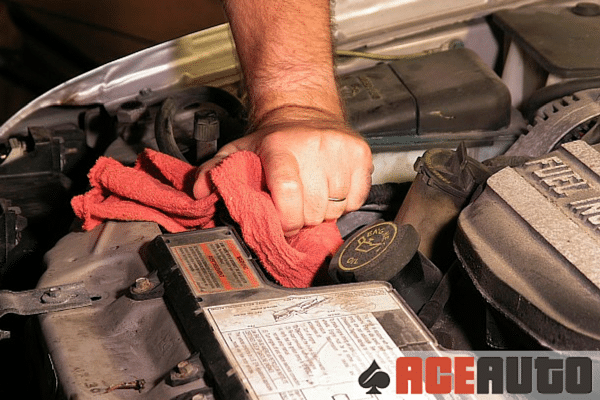
The radiator is one of those parts of your car that works quietly away without you every noticing…until it breaks, and then you really notice. This reservoir holds water and antifreeze to help keep your engine in tip-top condition. Engines create a ton of heat when they operate (and friction, but that's a whole other issue), and that heat can quickly destroy them unless it's cooled down. Enter the radiator, which draw heat away from your engine and protects your car from other temperature-related problems, like freezing during an especially cold night freeze.
However, radiators don't run perfectly forever. Their contents can grow old and contaminated, which leads to problems. This is where radiator flushing can prove especially helpful.
Antifreeze, engine coolant, and all related liquids run in constant cycles through an enclosed system, so they can last a long time. However, constant exposure to your engine does take its toll. Over time, coolants grow contaminated with other particles and stop working as well, eventually endangering your engine with overheating and corrosion issues.
A coolant flush simply cleans out your radiator system and replaces all your coolant with a new version. Generally it takes place in several steps. The old coolant is completely pumped out, a cleaner is pumped into the system to help clean it up, and then new coolant is added.
Go too long without a radiator flush, and your engine could destroy itself from the inside out, overheating and causing that dreadful scenario where you are stranded by the side of the road with smoke or steam pouring out of your hood. But there's a lot of other pertinent benefits too, including:
It can depend, so your owner's manual will have the most accurate information on when you should get a flush. For most cars, it's around 50,000 miles because it takes time for your coolant and antifreeze to develop problems, but they are affected by temperatures and driving habits as well as time, so some people may benefit from getting a flush more frequently.
Take your car into Ace Auto Repair for a coolant flush, and you will get the ASE certified treatment that you deserve. Our technicians can offer free repair quotes for any problems that they encounter, and use mobile diagnostic testing for quick results. All work guaranteed with us, so take a visit to our website and see how you can schedule a coolant flush.


Here at Ace Auto Repair, we want you to know the 5 signs of worn brakes. We like our customers to feel safe and secure in their vehicle. By knowing what to look and listen for, you could save money by catching small problems with your brakes before they become an even bigger problem.
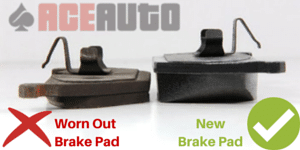 Worn Brake Pads
Worn Brake PadsMost cars use what are known as disc brakes. A hydraulic system filled with brake fluid triggers a set of pads that clamp down on the cars calipers, which causes them to squeeze together on a disc known as the rotor. The friction that occurs between the pads and rotor eventually stops the car. Over time, as you can imagine, the pads will begin to wear thin, which means they'll become less effective at slowing and stopping your car. To check the thickness of your brake pads, all you need to do is look between the spokes of your wheel to spot the shiny metal rotor inside. When you find it, look around the outer edge where you'll see the metal caliper. Between the caliper and rotor, you'll see the pad. You'll have to estimate, but generally, your pads should be at least one-quarter of an inch thick. If they're any thinner than that, it's a good idea to get them changed. If your car wheel isn't designed in such a way that you can see through the spokes, you'll have to remove the tire to see the rotor and pads. In either case, while you're looking, it's also a good idea to inspect the rotor itself. It should be relatively smooth. If you see any deep grooves or pits, it might also be time to replace that, as well.
 One of the warning signs that your brakes need servicing can come from a small indicator in your braking system that emits a high-pitched squeal when your pads need replacing. In addition to the squeal from the sensor, you'll also want to listen for a harsh grinding sound. This means that you've gone completely through your brake pads and now, when you apply the brakes, the metal of the calipers is grinding against the metal of your rotors. Not only is this an ineffective way to stop your car, chances are good that you'll also damage your rotors, thus turning a relatively easy and inexpensive pad job, into a more costly rotor resurfacing or replacement ordeal. Remember each brake pad comes equipped with a wear indicator that squeals when your pads need replacing.
One of the warning signs that your brakes need servicing can come from a small indicator in your braking system that emits a high-pitched squeal when your pads need replacing. In addition to the squeal from the sensor, you'll also want to listen for a harsh grinding sound. This means that you've gone completely through your brake pads and now, when you apply the brakes, the metal of the calipers is grinding against the metal of your rotors. Not only is this an ineffective way to stop your car, chances are good that you'll also damage your rotors, thus turning a relatively easy and inexpensive pad job, into a more costly rotor resurfacing or replacement ordeal. Remember each brake pad comes equipped with a wear indicator that squeals when your pads need replacing.
 Has your car ever felt like your car has a mind of its own? As if it wants to make right or left hand turns while driving or braking? If so, this could indicate a problem with the braking system. The cause of this pulling might be a stuck caliper. Because such a scenario would cause friction on one wheel and not the others, your car can pull to the side where the caliper is stuck. Two other brake-related scenarios that could cause a car to pull would be a collapsed brake hose that would cause your calipers to move unevenly when applying the brakes, or uneven brake pads, which would also apply different amounts of pressure to different wheels. Pulling, however, doesn't always indicate a problem with the brakes. The cause could also come from unevenly inflated or worn tires, poor alignment or a problem with your vehicle's suspension. This is why, if your car begins to pull, you may want to pull up to the Ace Auto Repair and have our ASE technician do a full checkup on the problem.
Has your car ever felt like your car has a mind of its own? As if it wants to make right or left hand turns while driving or braking? If so, this could indicate a problem with the braking system. The cause of this pulling might be a stuck caliper. Because such a scenario would cause friction on one wheel and not the others, your car can pull to the side where the caliper is stuck. Two other brake-related scenarios that could cause a car to pull would be a collapsed brake hose that would cause your calipers to move unevenly when applying the brakes, or uneven brake pads, which would also apply different amounts of pressure to different wheels. Pulling, however, doesn't always indicate a problem with the brakes. The cause could also come from unevenly inflated or worn tires, poor alignment or a problem with your vehicle's suspension. This is why, if your car begins to pull, you may want to pull up to the Ace Auto Repair and have our ASE technician do a full checkup on the problem.
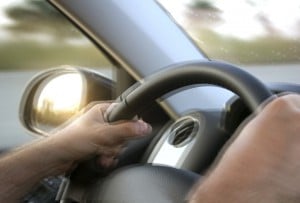 If your brake pedal pulses under normal braking circumstances, you could have a problem. Generally, a vibrating brake pedal indicates warped rotors. Their uneven surfaces will thrum against the brake pads, and you'll feel the feedback through the brake pedal. Rotors usually only warp when they're under extreme stress for an extended period. The friction-generated heat caused by driving down steep mountainsides or by stopping frequently while towing something heavy, can cause the metal of the rotors to change shape. If you haven't stressed your brakes recently, but you still feel vibration in the pedal, it may be best to take it in for a diagnostic test.
If your brake pedal pulses under normal braking circumstances, you could have a problem. Generally, a vibrating brake pedal indicates warped rotors. Their uneven surfaces will thrum against the brake pads, and you'll feel the feedback through the brake pedal. Rotors usually only warp when they're under extreme stress for an extended period. The friction-generated heat caused by driving down steep mountainsides or by stopping frequently while towing something heavy, can cause the metal of the rotors to change shape. If you haven't stressed your brakes recently, but you still feel vibration in the pedal, it may be best to take it in for a diagnostic test.
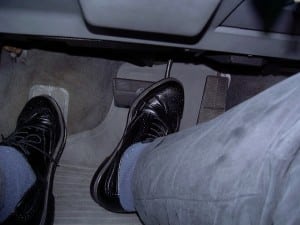 In addition to thrumming, your brake pedal can give you other indications that your car's braking system might need examining. A mushy pedal, one that goes practically to the floor before engaging the brakes, could indicate worn pads or a problem with the hydraulic system, such as air in the line, an air leak, or a brake fluid leak. To check for a fluid leak, put an old white sheet or piece of light cardboard under the car overnight. In the morning, examine any fluid that collects. Brake fluid will be practically clear and the consistency of cooking oil. The opposite of a mushy pedal is one that causes the brakes to grab immediately at the slightest touch. This could indicate an unevenly worn rotor, dirty brake fluid, or contamination of the fluid by moisture. You can solve such a problem with a relatively inexpensive change of fluid.
In addition to thrumming, your brake pedal can give you other indications that your car's braking system might need examining. A mushy pedal, one that goes practically to the floor before engaging the brakes, could indicate worn pads or a problem with the hydraulic system, such as air in the line, an air leak, or a brake fluid leak. To check for a fluid leak, put an old white sheet or piece of light cardboard under the car overnight. In the morning, examine any fluid that collects. Brake fluid will be practically clear and the consistency of cooking oil. The opposite of a mushy pedal is one that causes the brakes to grab immediately at the slightest touch. This could indicate an unevenly worn rotor, dirty brake fluid, or contamination of the fluid by moisture. You can solve such a problem with a relatively inexpensive change of fluid.
If you are experiencing issues with your car or trucks brakes, visit to Ace Auto Repair Utah for a diagnostic check. We guarantee all of our work and promise to get your vehicle up and running in no time. Call 801-803-6016 or visit us online at AceAutoUtah.com.


The cold weather is harsh on your car. In order to avoid expensive repairs – and dangerous accidents – check out what the sub-zero temperature can do to your car, and what you can do to help prevent problems.
A couple different things can go wrong with tires when cold weather strikes. First, tire pressure will vary according to temperature. A drop in temperature can cause your tires to quickly deflate – this is noticeable even when driving at night compared to driving during the day. Check your recommended tire pressure when the weather starts to get chilly. Also keep in mind that many tires are still made with rubber materials, and these materials will harden when the weather gets cold. This can cause tread and gripping problems in all-season tires. Winter tread tries are designed to resist this problem with alternative materials – another good reason to consider switching to winter tires.
When the weather gets seriously cold, your battery may struggle to operate correctly. This is caused by low temperatures interfering with the way that a battery operates and in some cases actually leeching away voltage, reduce the charge that a battery has to get a car started. The last thing you want in the middle of winter is to go out and find your car has a dead battery. There are several ways to avoid this problem. In the coldest areas, consider using available car heats. Make sure your battery is not too old – most batteries are in their peak condition for around 3 years. When the temperature starts dropping below zero, try to keep your car in a garage as often as possible.
While most of the fluids in your car have additives to keep them from freezing, this doesn't mean they aren’t affected by freezing temperatures. When the weather gets cold fluids grow sluggish, thickening and moving more slowly. This is most dangerous when it comes to transmission fluid, which needs to move effectively to manage car performance. However, sluggish brake fluid can also be disastrous. Even oil can thicken and struggle to perform. Check your fluids and replace or top off as needed.
Click here to read 5 Cold Weather Car Myths
Your engine really doesn't like cold weather. It will struggle to run efficiently when the temperature drops below zero, using a lot of gasoline very quickly to keep itself from stalling. Not only does this lower efficiency, but it also causes the build-up of water vapor. This is especially noticeable if you only run your engine for half an hour or so at a time. Try leaving your car running to stabilize your engine and get rid of accumulated water vapor. Heaters will also sap heat away from your engine, so avoid immediately turning on your heater when starting your car.
For the same reason that batteries tend to struggle in cold weather, spark plugs may also be in danger. Electricity simply does not fare well in cold, dry condition, and older spark plugs will only make conditions worse. So, before the coldest weather starts, check out your spark plugs for any sign of corrosion or age and replace them if necessary.
Windshields are very durable in modern cars, but some windshields may still be in danger of cracking, especially when mistreated in cold weather. Use the right kind of coolant, never wash with hot water in cold weather, and take special care of your wipe blade so that they don't freeze to your windshield. This can be aggravated if other cars are kicking up a lot of slurry into your windshield, especially slurry made with rock salt or similar components.
Older or more delicate engines may also be in danger of cracking if the engine block is vulnerable to sub-zero temperatures and your coolant is contaminated or inferior. Keep that coolant topped off and use the recommended formula!



Ace Auto Repair knows how the cold affects vehicles, and are conveniently located in West Jordan, Utah, and serves the surrounding areas. If you are need of engine repair or need a diagnosis, contact Ace Auto Repair today! We work on all makes and models of cars, trucks and SUV's. We are family owned company, and pride ourselves on being honest auto repair professionals.
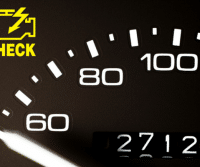
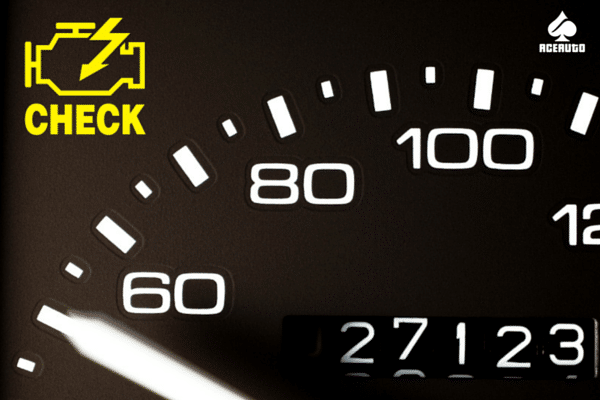
You might be driving at full speed on the highway or cruising through town when you notice the check engine light in your dash has come on. The car seems fine and you might be tempted to ignore the warning light. What is the check engine light? Why does the check engine light come on?
The Check Engine light, formally known as the Malfunction Indicator Lamp (MIL), is a signal from the car's engine computer that something is wrong. A federal government mandated on-board diagnostics (OBD) for all passenger cars sold in the United States, a check engine light is different than "service required" light which simply means it’s time for an oil change or air filter check. While increases in repair costs might cause consumers to postpone vehicle repairs, doing so is a bad idea. The reasons a check engine light is on range from a damaged gas cap to a bad sensor. The repairs may not be as costly as you fear.
A loose or damaged gas cap is the least expensive, yet very common, problem that can cause your service engine soon light to come on. Loose or damaged gas caps result in millions of gallons of evaporated fuel each year across the nation. If you notice the check engine light going on and off, try tightening or even replacing the gas cap. The low average repair costs show that simply tightening the cap usually solves the problem.

A failed O2 sensor is the most common cause of a flashing check engine light. The O2 sensor is a critical part of the exhaust system, monitoring how much unburned oxygen is exiting the engine in the exhaust. The sensor sends messages back to the engine to adjust the mix of oxygen and fuel being used. A faulty O2 sensor will result in reduced fuel economy and can take a toll on the catalytic convertor. Replacing the O2 sensor will protect critical engine systems and keep your vehicle running at peak fuel efficiency.
The catalytic converter is a rugged component of the overall exhaust system. Generally, catalytic converter repair is a secondary underlying program that is ignored for too long, such as a failed spark plug. A more costly repair because of the precious metals used in its construction, replacing catalytic converters represented just 6.1% of repairs in 2013.
The mass air flow sensor calculates the amount of fuel needed to mix efficiently with the oxygen in the engine. A malfunctioning sensor will lower fuel economy up to 25 percent. Having it replaced by your mechanic will cost an average of $423.00 but will make it up to you in savings at the pump.
Can spark plugs cause check engine light to flash? Absolutely! A fouled spark plug can cause the engine to misfire. Replacing the spark plugs in a timely manner will be a relatively small expense. The cost to replace spark plugs varies significantly based on the type of car you have and where you take your car. Cars have differing numbers of spark plugs and the accessibility of the spark plugs will affect the labor rate as some cars may be designed in a way that makes the spark plugs harder to reach. Cars like a BMW will be on the higher end, and cars like a Toyota Corolla will be on the lower end. If the problem is ignored, the damage can spread to the spark plug wires, catalytic converter, or ignition coils causing a more costly repair.
Local parts stores can check engine codes for free, but this will just give you an error code, and it just the beginning of the diagnostic process. You can buy a home diagnostic machine yourself, however, you would need to know how to read it.
Ace Auto Repair in West Jordan Utah provides expert diagnostics with written estimates. Many people ignore warning lights if the car still seems to drive the way it used to, however, a check engine light is a red flag that something in your vehicle is amiss. If you see the check engine light flashing and you don’t take care of it immediately, you are putting your car at risk for costlier future repairs and malfunctions.
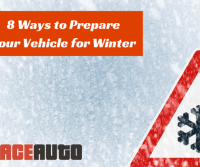
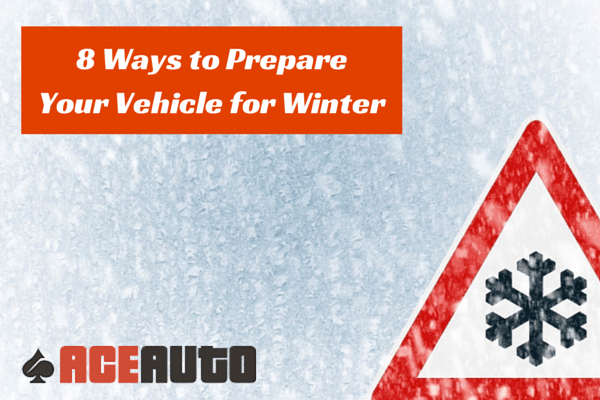
Salt Lake City, Utah is surrounded by the Great Salt Lake and the mountains; this combination makes for a chilly, wet winter. With the temperatures usually below freezing, the roads can become slick quickly. However, the Department of Transportation is also quick about dumping salt and sand on the highways and roads. Unfortunately, for your car, that salt can cause damage your paint or cause rust spots.
It’s important to winterize your vehicle to properly protect you, and you car. How many times have you left work or the grocery store to find a blizzard has arrived or the parking lot has been turned into a skating rink? Winterizing your car is your best defense against Mother Nature’s winter furies.
Let’s take a look at what you need to do to winterize your car for the snow and ice.
Read Why Oil Changes Are Important Here
If you need help getting your car ready for winter near West Jordan,Utah, Ace Auto Repair is the place to go.
Read 6 Ways the Cold Affects Your Vehicle (and What to Do About It)
Recent Comments